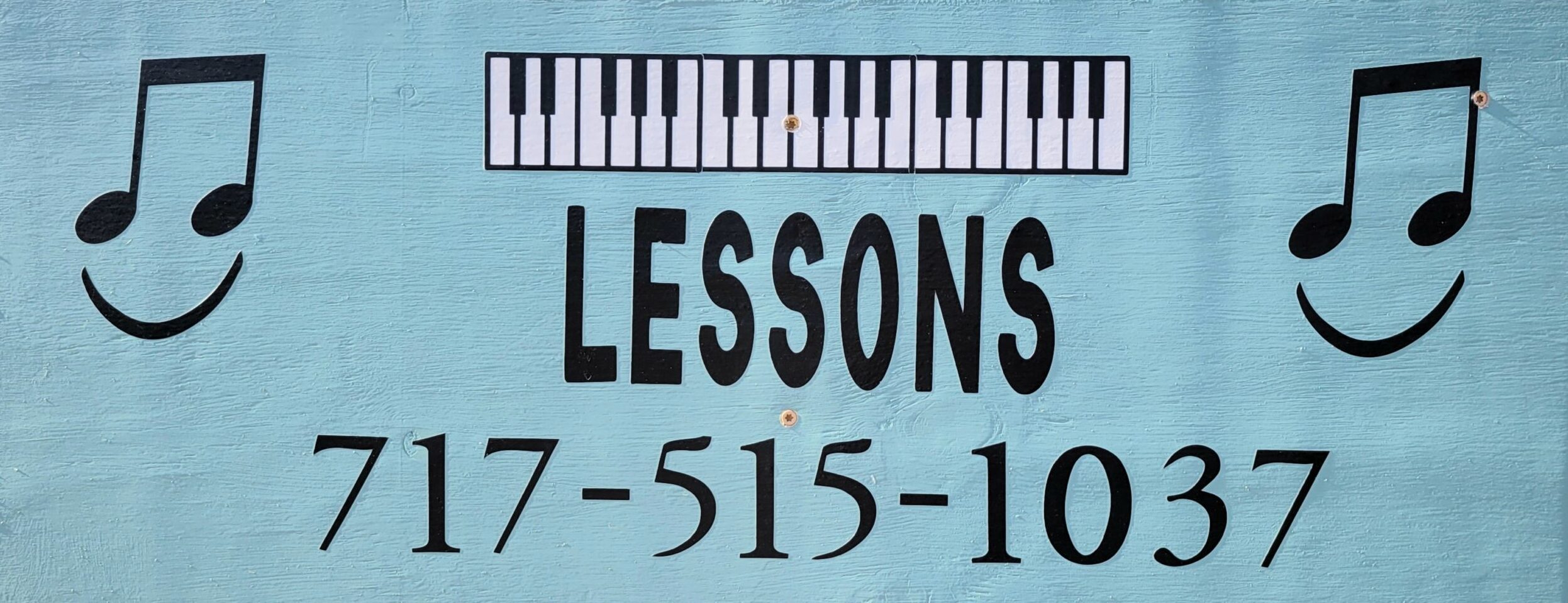Your acoustic piano should not be placed against an outside wall, because of temperature and humidity changes.
An electronic or digital keyboard is okay for beginners, but be sure that the keys are full-sized so that students get accustomed to the proper spacing. The keyboard need not be full length.
Piano Tuner: Mr. David Nace Home: 717.225.1428 Cell: 717.600.5154
Mr. Nace is an older gentlemen who is a member of the Master Piano Technicians Guild of America. He will tune your piano to the proper pitch; not just tune it to itself as will other tuners. He can also do repairs. I do recommend that you ask for an estimate when you call.
Essential Ingredients for Good Piano Performance
A student must focus meticulously on what he or she is doing, whether practicing or performing a piano piece.
Kids these days have a lot of choices. When I was young, one of the reasons I practiced piano was because I had nothing else to do. It was easy for me to focus– nothing (be it really fun or something harder like a sports team) distracted me. Today, a student must make a special effort for time in his or her schedule to practice. Sometimes it helps to have a quiet room where they can shut the door. Besides shutting out distractions that call to them, it takes away any stigma they might have of knowing people are listening to the mistakes they make while trying to learn a piece. It is really hard to work on fixing the wrong notes, when you’d like to gloss over them and make it sound like a song because someone can hear you.
A good piano student will exhibit certain characteristics. He or she will be a good listener, and adept at remembering and following instructions. When he practices a piece, he will pay close attention to the sound, to see if he is playing the right notes. He will notice when it doesn’t sound like it did in his lesson, and will double check the notes to see if he is playing the right ones. She will try to follow the music with her eyes, without looking at her hands, in order to keep the flow of tempo moving along. She will not memorize the music in order to avoid reading the notes. He will do his best to learn/ memorize all the notes on the lines and spaces of the treble and bass staffs as quickly as possible. This will enhance the flow of the music and make it easier to go quickly and to pay attention to other necessary details.
A song should flow at a steady pace. A necessary tool is the metronome, abbreviated M.M., which was invented in 1815. Before this time, musicians had to guess how fast or slow the composer wanted their music performed. The M.M. uses numbers 40-208 to indicate how many beats per minute the notes should be played.
Dynamics give additional finesse to a musical piece, and must be adhered to for truly great performances. Dynamics include the signs of loud and soft, medium loud and really soft, known as forte, piano, mezzo forte, and pianissimo respectively. Additional markings are the crescendo, decrescendo, ritardando, (gradually louder, softer, and slower) and slurs (how the music “breathes”). Carefully following these markings will enable a pianist to play the music exactly as the composer intended. It will also provide a very interesting listening experience, making the piano “sing.”
A true piano lover will do the work of his teacher’s assignment, and then continue to play other fun songs that he likes and is familiar with. Hopefully his teacher will have provided these for him.
A musician may be a moody, emotional person. This type of person usually has the qualities of expression that make people say “Wow” when they hear their music performed. A temperamental person is able to work out the emotion he is feeling through his fingertips. Of course, moodiness is not a requirement and is not really preferred. But such a person may more easily be able to display a type of controlled emotion, such as anger, that comes out as forcefulness and power in her fingers. Likewise, she should be able to showcase a range of expression, to emote– feelings like happiness, peace, suspense, sadness, excitement– any emotion imaginable, on the piano keys.
A good pianist must pay attention to detail such as the ones mentioned above. If he or she can be observant, remember and follow specific instructions, and practice faithfully, he will be able to perform at a highly satisfactory level. It really is work, learning to read a new language (these crazy dots with lines)– and trying to coordinate both hands to play different things at the same time. Ever try typing on your computer while riding your bicycle at the same time? A piano has foot pedals, too!
One last reminder. Practice does not make perfect unless it is “perfect practice” because practicing the wrong thing over and over will not make the song perfect! That would actually make it worse for the next song she tries. So do your favorite piano teacher a favor, Mom and Dad. Check once in awhile that your child is using the essential ingredients of good piano playing!
***Mrs. Brammer teaches in Felton, PA. She can be reached at 717.515.1037.
Additional:
Interesting fact. The piano was originally called the “gravicembalo col piano y forte.” Translated, it means “harpsichord or clavichord with soft and loud.”
